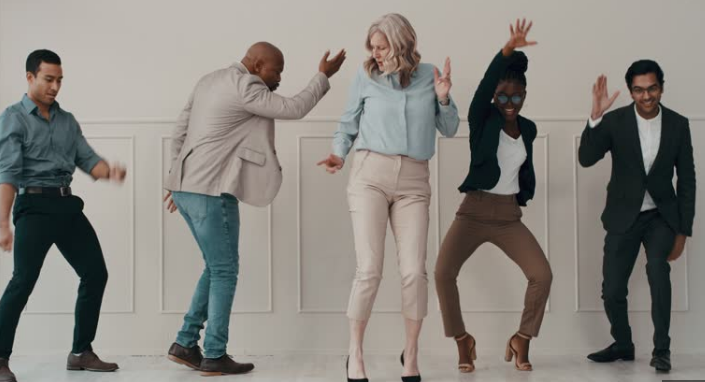When you come across the term private-office-folder/n-bfr939/random-dancer-footage, it can evoke various interpretations depending on your context and perspective. To some, it may simply represent a folder containing dance footage, while to others, it could signify something much more intriguing—perhaps a hidden cache of sensitive content or even an inside joke within a particular community. In this article, we’ll break down each component of this mysterious folder, exploring its possible meanings and implications.
What is a Private Office Folder?
The Concept of Private Office Folders
A private office folder generally refers to a directory or storage space within a digital system used by individuals or organizations to store sensitive information, documents, or media files. The term “private” implies restricted access, meaning only authorized individuals can view or interact with the contents.
Use Cases for Private Office Folders
- Confidential Projects: Companies often create private folders for projects that involve sensitive information, such as financial data, client details, or intellectual property.
- Personal Files: Individuals may maintain private folders for personal matters, including legal documents, tax returns, or private correspondence.
- Creative Works: Artists or content creators might use private folders to store drafts of their work or raw footage that isn’t ready for public consumption.
Decoding the “n-bfr939” Component
The term n-bfr939 likely serves as an identifier or code for the specific folder or its contents. Such codes can be used for various reasons:
Possible Interpretations
- Project Code: It could signify a specific project or series of files related to dance footage, perhaps assigned by a team or organization for internal tracking.
- Random Identifier: Alternatively, it may simply be a randomly generated string meant to keep the folder unique within a larger system.
- Versioning: The code could also indicate a version or iteration of the files contained within, helping users track changes over time.
What About the “Random Dancer Footage”?
Now, let’s explore the phrase random dancer footage. At first glance, it suggests a collection of videos or recordings featuring dancers, but what does that entail?
Possible Contents of the Folder
- Dance Performances: This could include clips of various dance performances, showcasing different styles, routines, or improvisations.
- Behind-the-Scenes Content: The footage might feature rehearsals, practice sessions, or candid moments capturing dancers in action, providing a glimpse into the creative process.
- User-Generated Content: It’s possible that the folder contains submissions from community members or fans, contributing to a broader collection of dance-related media.
Exploring Interpretations and Contexts
Humor and Inside Jokes
In some circles, private-office-folder/n-bfr939/random-dancer-footage may simply be an inside joke, a playful reference among friends or colleagues who share a passion for dance or humorous content. This kind of playful nomenclature can foster a sense of community, serving as a way to connect over shared interests.
Potential for Sensitive Content
On the flip side, the concept of a “private office folder” carries connotations of confidentiality. If this folder is indeed used to house sensitive content, it raises questions about privacy, security, and ethical considerations surrounding the material stored within.
Conclusion
The phrase private-office-folder/n-bfr939/random-dancer-footage encompasses a range of potential meanings and interpretations, from simple dance footage to a repository of sensitive material. By breaking down each component, we gain insight into the possible uses, implications, and cultural significance of such a folder. Whether it’s a playful collection of dance videos or something more serious, understanding the context can enhance our appreciation for the content and the conversations it may inspire.
FAQs
1. What is the purpose of the private-office-folder?
- The private-office-folder serves as a secure space for individuals or organizations to store sensitive information, documents, or media files. Its contents are typically accessible only to authorized users.
2. What does the “n-bfr939” code signify?
- The “n-bfr939” code is likely an identifier for the specific folder or its contents. It may represent a project code, a randomly generated identifier, or a versioning system to track changes within the folder.
3. What kind of content can I find in the random dancer footage?
- The folder may contain various types of dance-related media, including recorded performances, rehearsals, behind-the-scenes footage, and possibly user-generated content from dancers or fans.
4. Is the content in this folder private or public?
- As indicated by the term “private office folder,” the content is likely private and meant for limited access. Unauthorized access to the folder could violate privacy and security protocols.
5. Could the folder contain sensitive or confidential material?
- Yes, if the folder is used within an organizational context, it could house sensitive or confidential information related to specific projects, individuals, or creative works.
6. What should I do if I find this folder on my device?
- If you find the folder and are unsure of its contents or origin, it’s best to avoid opening it. If it appears to contain sensitive or confidential material, consult your organization’s IT department or privacy officer for guidance.
7. Can the contents of the folder be shared?
- Sharing the contents of a private office folder without authorization is generally not recommended. Always check for any confidentiality agreements or organizational policies before sharing files.
8. How can I ensure my own folders are secure?
- To keep your folders secure, use strong passwords, enable two-factor authentication, regularly back up your data, and follow best practices for data privacy and security.
9. What if the folder is an inside joke among friends?
- If the folder is indeed a playful reference, it can be a fun way to connect with others who share a common interest in dance or humor. However, it’s still important to respect privacy and avoid sharing it without consent.
10. How can I learn more about digital folder organization and management?
- There are many resources available online, including tutorials, articles, and courses on digital organization, data management, and security practices to help you keep your files structured and secure.
